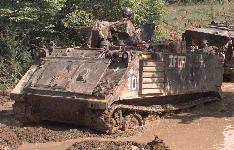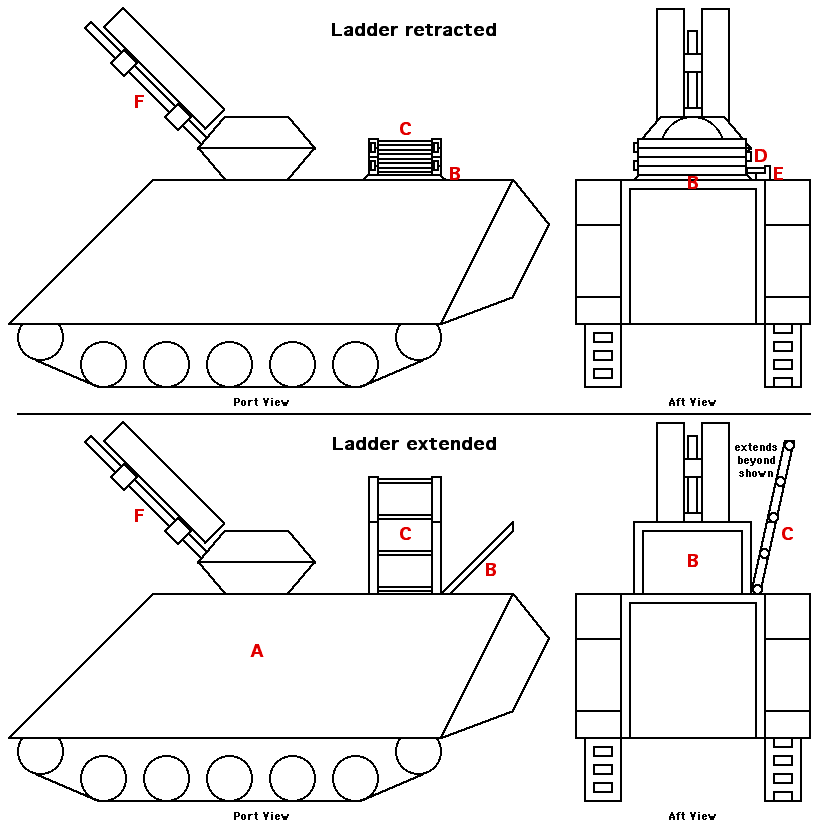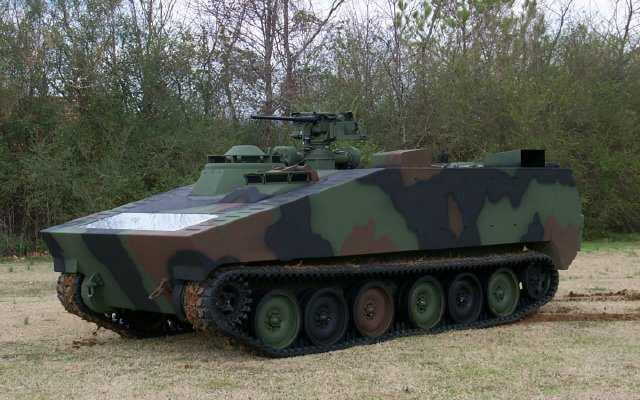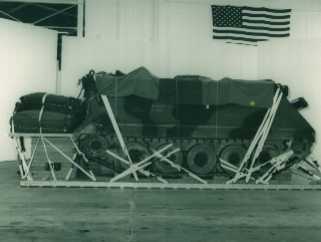
If you have not already, please sign the Gavin Petition to name the M113 the "Gavin" after one of the Army's greatest generals of all time, Lt. Gen. James Maurice Gavin (USA, ret. el al): Naming the M113 the "Gavin"
Now I have written much on this website about the M113, but now I will try to combine all the features I'd like to see into one page and one coherent vision. Some readers might remember a previous page by this same name, this page is an attempt to update that previous page.
First let me define what I will be talking about here. This vehicle - the M113 GLT-AFV - is designed to carry a full squad of infantry and all the equipment and supplies they'll need under protection from small arms, HMGs, RPGs and blast/fragmentation. This vehicle will also be a source of fire support by carrying a number of varied heavy infantry arms from a steadied, self-propelled and protected platform. This vehicle is not a "tank with infantry in the trunk" type heavy Infantry Fighting Vehicle (IFV), it is instead a platform for the movement, sustainment and firepower-overmatch support of infantry, against infantry. If the M113 GLT-AFV encounters tanks it either calls in other tanks, air or artillery support or infiltrates it's infantry forward to ATGM-ambush positions. The latter is the most likely - especially when lacking tank support, and even then - scenario. I have ideas for all sorts of other variants to go along with my M113 GLT-AFV, but for now I will only talk of the infantry carrier variant.
Since their inception AFVs ("tanks") have been measured by three benchmarks; protection, firepower and mobility:
PROTECTION: The M113 GLT-AFV is an infantry vehicle, not meant to dual it out with other tanks, it's best protection is good tank-infantry-team tactics and a potent, man-portable ATGM in every vehicle. Thus the GLT-AFV only needs protection from "infantry weapons" the most potent of which are Heavy Machine Guns (HMGs), Rocket Propelled Grenades (RPGs) and the blast and fragmentation effects of boobytraps up to and including the use of 152mm/155mm artillery shells. It is also must be "insensitive" to Anti Personnel Mines (APMs) and desirably against Anti Tank Mines (ATMs). The "baseline" M113 is already protected against boobytraps, small arms fire up to 7.62mm Armor Piercing (AP) and APMs. A special "belly armor" kit has been available since Vietnam that makes the M113 ATM "insensitive" so that is standard on the GLT-AFV. New "peal and stick" add-on armor for the M113 brings "hard" armor protection up to HMG-proof standard. To protect against RPGs - the beasty all AFV crewmen fear - can be protected against by building "standoff" on the GLT-AFV's sides. This standoff can be created as simply by strapping MRE boxes to the sides, though a more permentent solution is desirable. Something like the Israeli "toga" armor is IMO the best existing solution, for it provides both standoff and storage space, which if you wish to beef up the KE protection level means you only need to "store" sandbags here to do so. A better solution that only now exists on my drawing board is to fashion small storage compartments - 6-12 inches deep - all around and even on top that can be used similarly to theIDF's "toga" armor.

However my idea doesn't need sandbags that can deteriorate in the elements to hold the earthen-armor and can easily be "evacuated" to save weight and add buoyancy for amphibious operations. Also since the fuel tanks of the M113A3 - my "baseline" vehicle for the GLT-AFV - are external to increase survivability of the crew it seems pertinent that the crew should place all ammo on the vehicle's floor and forward of the first road wheel to prevent any penetrations - mainly by RPGs or ATMs - from igniting anything inside, thus making all penetrations "safe" or frustrating to the enemy shooter. One of the main problems with AFVs - especially 'gun AFVs' or "tanks" - is that if they are penetrated some critical system inside with be at minimum damaged, creating a "mobility-" or "function-" kill, if not hit a highly volatile part like ammo, fuel or hydraulic fuel which then proceeds to burn and explode inside the vehicle to "undesirable" effects. Even if the crew gets out unscathed - unlikely - the AFV is destroyed - can no longer contribute to the fight - and the crew - and in the case of an IFV/APC the infantry - are stranded with whatever weapons, ammo and supplies they can grab the moment they abandon the vehicle. Now they are most likely in hostile territory so this is REAL BAD NEWS TO THEM and REAL GOOD NEWS TO THE ENEMY, certainly a condition you don't want to aid in any way.
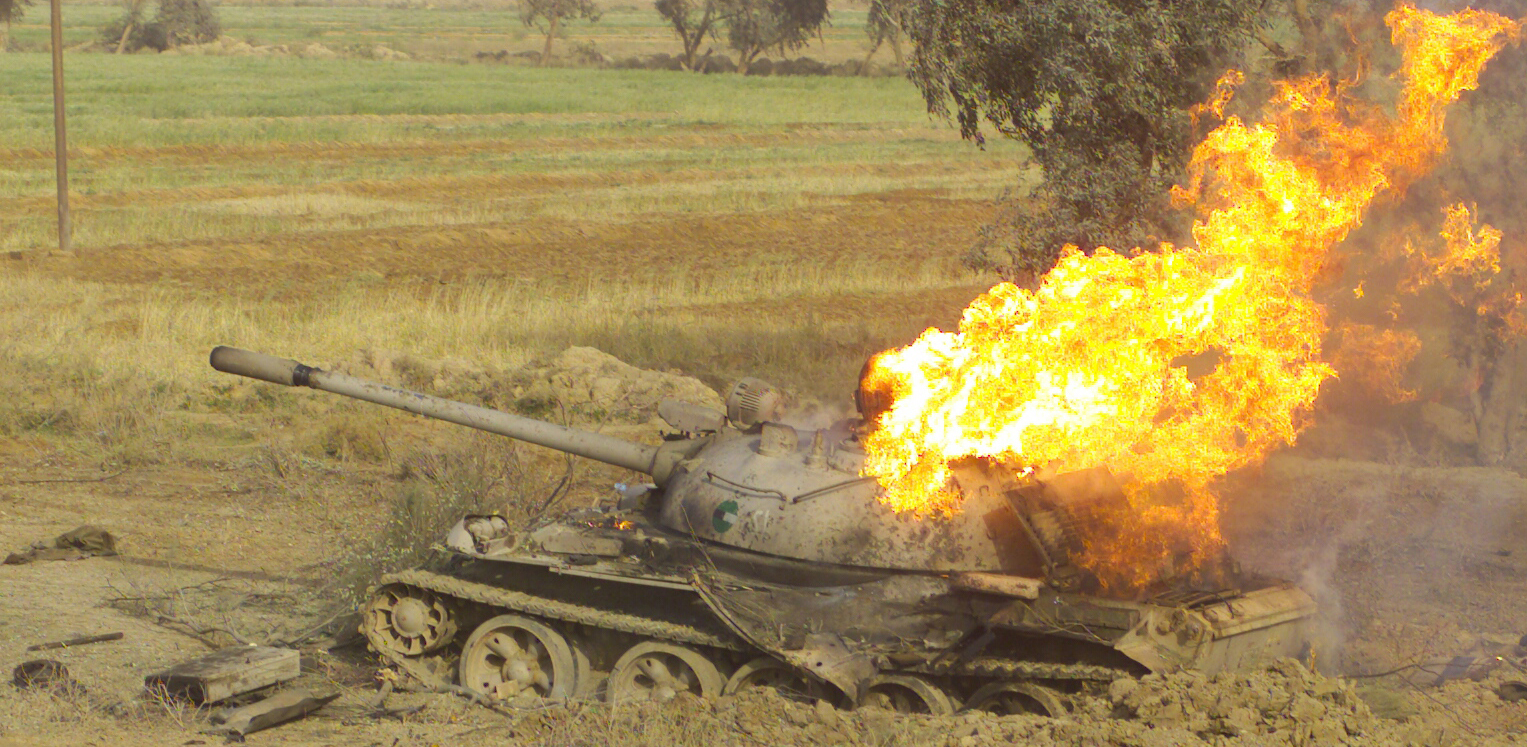
The M113 is a great vehicle because of it's utter simplicity; the only moving parts that can be harmed or fail for all practical purposes are in the engine compartment. If penetrated anywhere else by there is no "critical system" in the way than can be destroyed or volatile part to explode inside the vehicle.
FIREPOWER: Since the M113 GLT-AFV is an infantry vehicle, it should its self by armed with infantry heavy weapons and accommodate the use of small arms onboard. The primary armament would be a AV-30 turret armed with a M240 medium machine gun (MMG) and a MK-19 grenade machine gun (GMG). The AV-30 turret is fully stabilized for long-range on-the-go fires and can accommodate a image intensifier and FLIR sights in a fully enclosed, NBC-sealed 7.62mm Ball protected box. The M113's "peal and stick" armor should be applied to the outside of the AV-30 turret where ever possible to bring it up to the desirable protection level as well. The AV-30 can rotate, depress and elevate it's guns 360, 8 and 45 degrees respectively. The M240 is a balance between penetration (greater than a 5.56mm MG) and ammo stowage (can easily be made 10,000+rds) wile the MK-19 offers HE-frag, HEDP-frag (with 5cm penetration), a future WP for rapid continuous smoke screening, APERS-flechette for none-UXO producing / no minimum range / KE effects, "sponge" impact-less-lethal (for crowd control) and even a tear gas (for additional crowd control ability) rounds. The M240 has a stated maximum point fire range of 1,100m and area fire range of 1,800m. The MK-19 has a maximum direct fire range of 800m and can hit targets out to 2,200m by indirect fire (much aided by the AV-30's high 45 degree maximum elevation). Estimated maximum ammo load for the MK-19 is around 2,000rds. One nice feature of the AV-30 turret is it can accommodate many different automatic weapons in it's twin weapons stations. It can use the M-240 MMG, M2 HMG, MK-19 GMG or the fearsome tank-killing ASP-30 auto cannon that fires the same rounds as the AH-64 Apache's "chin gun"; a proven tank killer. All these weapons can easily be swapped out as the mission requires by the crews themselves or even removed if the vehicle is catastrophically destroyed for dismounted use.
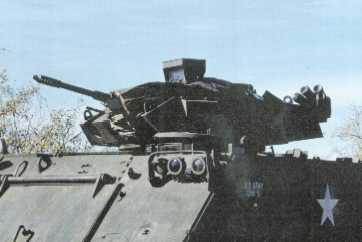
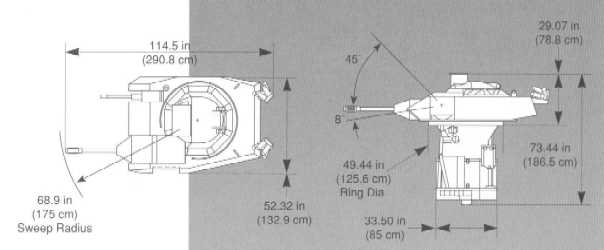
Now for me one turret isn't enough so there must be other weapons as well. To that end I also endorse the need to have a pair of "wing guns" using the same ammo as the turret's coax MG on highly flexible mounts and with their gunners behind some sort of shield. The Israelis come through once again of course. Their Zelda version of the M113 - same version that uses the "toga" armor - has a pair of wing guns for use by troopers standing in the troop hatch and having a pair of side-shields each with two armored-windows for maximum visibility (better than firepower for survival) in all directions. Further they have the troop hatch it's self extend slightly and reinforced armor to provide protection to the rear. If the Israelis are attacked to the rear, they simply lower the troop hatch and use small arms. Thus I would transplant whole the Zelda's wing-guns side-shields with armored windows and extended troop hatch for rear protection onto my GLT-AFV. I would also make the side-shields be hinged to fold down and the wing-guns sufficiently low on the hull and a mechanism created to raise the AV-30 turret 12-18 inches so the AV-30 could fire 360 degrees all around when the troops in the back are "buttoned up" and not using the wing-guns/side shields, this would also enhance the AV-30's ability to shoot vary close in against "belt buckle close" attackers when buttoned up.
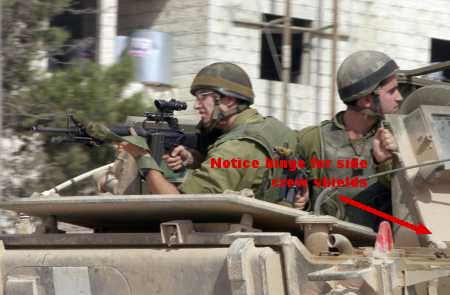
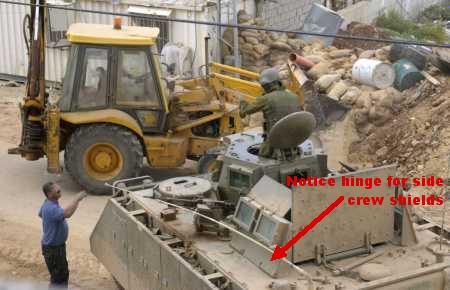
Next I would add a "bow gun" in front of the driver's position so that he could provide suppressing fire to the front when the vehicle is halted and the infantry are dismounting independent of the turret (which should focus on more important, known, targets instead of general suppression). This bow gun would be mounted on the vehicle via a large ball pivot that would be made of solid transparent armor so the driver could easily see what he was shooting at (instead of through some off-kilter way-to-small vision block). The bow gun would, due to it's limited use, not have vary much ammo, only in the 1,000-2,000rds range and perhaps as little as 500rds.
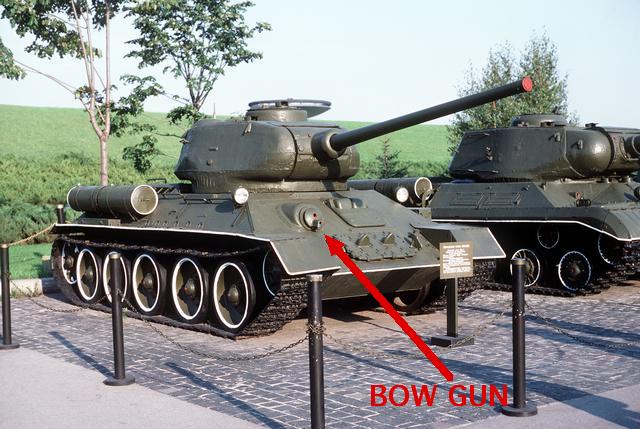
Next I would attach plenty of vehicular smoke grenade dischargers/launchers all around. The front would have no less than three for prolonged or multiple unexpected enemy encounters needing a hastily screened exit. The rear would actually also have a pair to escape pursuers and each flank would have no less than six for a "running smoke screen" during an ambush. These grenade dischargers should have many different types of rounds. In addition to the standardWP smoke round, tear gas and "flash bang" for crowd control and HE frag for dissuading pursuers. Additionally an "active protective system" (against infantry and light vehicles) would be provided consisting of 4 forward facing, 2 rearward and 4 each flank vehicle attachment points for standard M18A1 Claymore AP "mines" to blast away "belt buckle close" attackers, unprotected ambushers generally and perhaps just a diversion for the dismounting infantry (puts allot of noise and dust in the air!).
One of the great threats to infantry and infantry vehicles are tanks - or more specifically MBTs - and their main way of dealing with these is ATGM ambushes with sophisticated yet fairly mobile systems such as theJavelin. The Javelin would be usually be used dismounted and away from the AFV, but in an emergency - for example a medium to short range surprise encounter - it can be fired from the troop hatch wile mounted, even wile moving (though this is highly not recommended). Other than this the main standard arms aboard are a M3 Carl Gustav 83mm recoilless rifle, a pair of SAW light machine guns, M16s or M14s for all dismounts and something like a Mini Uzi with 3 30rds mags for the AFV crew members. Plenty of hand grenades, or in future Hand Rifle Grenades would also be carried.
Finally a system of gun ports and armored windows with added drop-down metallic armor would be put in similar to the M734. These would be arranged with one facing to the rear on the side opposite the ramp hatch's door (since two would prevent the full opening of the ramp hatch's door), one on the opposite of the afore mentioned gun port but on the troop hatch for rearward defense by the wing gunners with their personal weapons without needing to decrease their protection by dropping the troop hatch and finally 2 to 4 per side for the troops inside to fire outward and perhaps most importantly downward into the basement windows of buildings where the enemy is likely to hide. Also these provide the infantry inside with much needed situational awareness by simply having windows they can monitor the situation for themselves and see what's outside without exposing themselves before dismounting. In an emergency these windows can have a shield shut over them to prevent the enemy from seeing inside or using it as a Achilles' heal to fire or gain access inside.
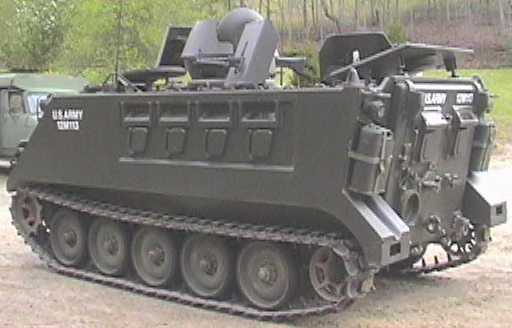
MOBILITY: The purpose of an infantry vehicle is to provide mobile protection, already covered, an immediately available fire support platform, ibid, and to "haul ass" in a big way, what I will cover here. Now by "haul ass" I mean both the Soldiers as well as all the equipment they are likely to need and plenty of supplies. One of the best ways to haul consumable supplies individually is a ruck sack, which can be loaded up with stuff that will need perpetual replenishment yet be dropped the moment the soldier enters combat to lighten himself to make himself more speedy and agile. This same principle can be applied to vehicles in the form of the trailer as a "vehicular ruck sack". The M113 is rated to carry as much as 10,000lbs of all items; fuel, armor, ammo, troops, supplies, equipment ect. This translates to a 2.5ton trailer carrying 5,000lbs. Now given an average crew of 12 (two track crew members and 5 dismounts along each side equals 12) each with assault-loaded can be said to weight an average of 250lbs each for 3,000lbs right off the bat that cannot be used for anything else. Now easily add approximately 2,000lbs for side-shields, wing guns, mine "belly armor" and any type of reinforcement to the main body armor and you are left with 5,000lbs of anything else you wish to carry. If one were to assume easily another 2,000lbs for the AV-30 turret, 10,000rds 7.62mm and 2,000rds 40mm and we're down to just 3,000lbs and we haven't even filled the fuel tank! Fuel at 6.7lbs per gallon in a 95gal tank equals about 650lbs with 10,000rds 7.62mm for the wing guns and odd equipment such as MG tripods, stretchers ect. rounding out the remainder of 2,000lbs we're left with only 1,000lbs.
This isn't much for water, MREs, rucks, small arms ammo, grenades or CG and Javelin rounds. So I hearby declare that only the dismount's ammo should be carried on board to whatever degree is decided necessary. Any other supplies - for extended ops the heaviest of all surely being fuel - should be carried in the trailer that would accompany every track in the field. 3,500lbs of fuel in 10 55gal drums will provide more than enough for 2 week continuous (8 hours a day at 20mph) movement thus leaving 1,000lbs for dismount ammo and 500lbs for general supplies (water can be scavenged from the environment, or dip into the fuel load). If the trailer is destroyed for any reason by the enemy a new one can easily by pulled in (3 at a time by a TSV) or dropped by C-130 (similar specs to the TSV). The M113 is also a great platform for CASVAC when no other means are available due to it's great terrain agility and it's spacious interior it can carry up to 4 litter patients or 8-10 ambulatory patients with one, even two, attendants under full protection with plenty of firepower.
The M113 is probably the most "terrain agile" platform in the whole US Army. It's tracks greatly increase it's all-terrain mobility yet it's light weight (at most it's still less than 1/2 the weight of a Bradley and 2/9 the weight of an Abrams) means it doesn't squander that softer - because larger than wheeled - footprint in unnecessary heft. Thus "light tracks" is better than either wheels or heavy tracks. But then there is the problem of the trailer being on just two wheels, thus it is going to be a handicap to mobility. Well look no further than the MatTrack "Trailer Mate" which is rated for up to something just like our little 2.5ton trailer! The Trailer Mate gives our little "log buddy" a pair of wheels with a band track between them for maximum ground area for minimum ground pressure and thus maximum terrain agility! The only issue seems to be that the track's road wheel axle attachment points are pretty low down and would seem to require some sort of vertical extension for the normal 2.5ton trailer. If weight carry weights are worked around enough with it should be possible to surround the fuel at least with spare parts - track links and road wheels come to mind - to act as "hard armor" and lightweight
In MOUT to hold ground you must clear buildings. It is often said the best way to clear a building is from the top down, but this is frequently vary difficult due to the bulkiness of long latter. Well I have already designed an "Interim Gavin Assault Latter" but I'd like to change it a bit for the M113 GLT-AFV. My IGAL for the GLT-AFV is a multi-section latter that is extended upward by pulling on a rope. By pulling on this line especially wide steps are also folded to the horizontal so that troops can use both hands for doing something other than scaling the latter, such as using their weapon, preparing a grenade or breaching an upper story window. The IGAL would be mounted on the inside of the troop hatch so troops inside could simply step up on to the troop hatch and walk up the latter when placed against the building needing to be assaulted at the right angle for proper seating and Soldier safety. The IGAL would, when prepared for extension, be secured to the M113's hull via a pair of hinges the two ends of which would connect together just prior to extension and then the IGAL would be detached from the troop hatch. Next the rope would be pulled and the latter would extend, which when used at the proper distance from the building would ensure the latter would be angled as it was designed for. The Soldiers inside then scale the latter - which if at the right angle should allow no-hands-assist ascension - and enter the building from a maximum of somewhere between the 3rd and 5th stories. One more thing about mobility I'd like to add: Hybrid Electric Drive (HED) and band tracks. HED allows the driver to be put in a move advantageous position (closer to the centerline of the vehicle and farther inward for greater protection perhaps?) and generate more electrical power for engine-off turret power and even a sort of "silent drive" like submarines for short distances (30 miles max)! Additionally band tracks increase track durability and decrease harshness on roads and noise level, furthering the "silent drive" capabilities. Now I will hereby attest that as much as I love the M113 and this is my design for what I'd like to see I WILL NOT UNDER ANY CIRCUMSTANCE drive one with a continuous band track - they are even more of a bitch to change when their time comes than a tire - but will heartily embrace segmented band tracks like the M50 Ontos had. Finally I'm a bit ambivalent about this - perhaps it's nostalgia - but I hereby also recommend that the M113 be increased in length by approximately 2ft and 1 pair of road wheels to increase internal seating capacity to 14 (2 crew and 6 abreast each side). A prototype HED powered, band tracked and 6-road wheeled M113A4 is shown below (it certainly looks impressive, dosen't it!): Well, that's it! Those are all my ideas. There's allot there but all of them are doable for far less than $1,000,000 a copy, probably closer to the $500,000 range. We need these platforms now because they are proven COunter INsurgency (COIN) and Low Intensity Conflict (LIC) platforms for victory. With plenty of seating for infantry, lots of "where it counts" firepower available at the SQUAD level, outstanding go-anywhere do-anything mobility and self-sustainment to chase after elusive foes and winning, proven by the IDF, MOUT abilities for the next "Operation Overlord" - which will certainly be in a city - the M113 GLT-AFV described is the best vehicle for our entire force except for a few "war winning" "heavy divisions" going into the future. Best of all it's so lightweight that it can be flown 5 at a time with their crews in a C-17 to be airdropped 10 miles from the target to arrive within half an hour of jumping and seize the target with a proven tank-infantry-team that can bust any SOB's ass on the planet.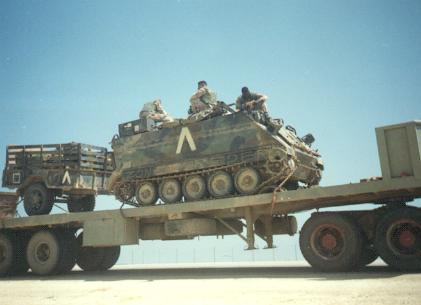

![]()
